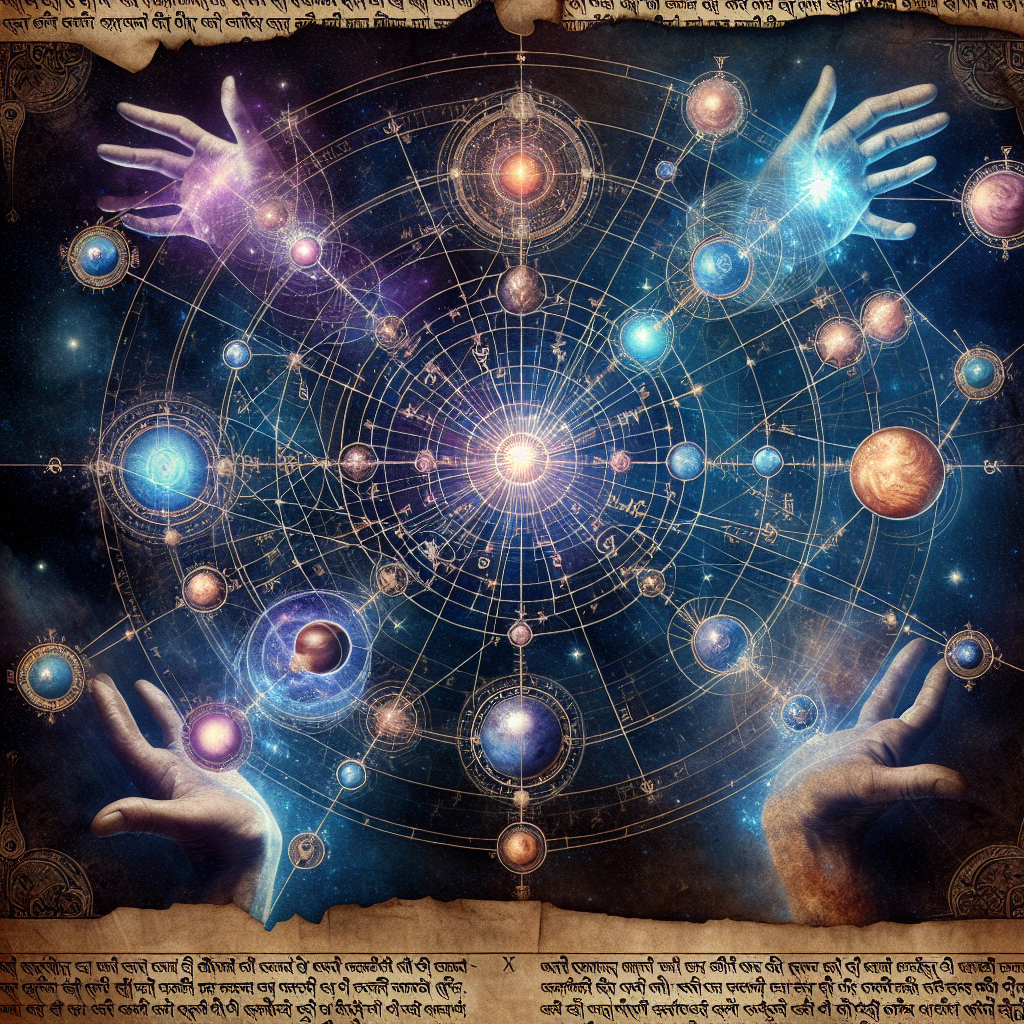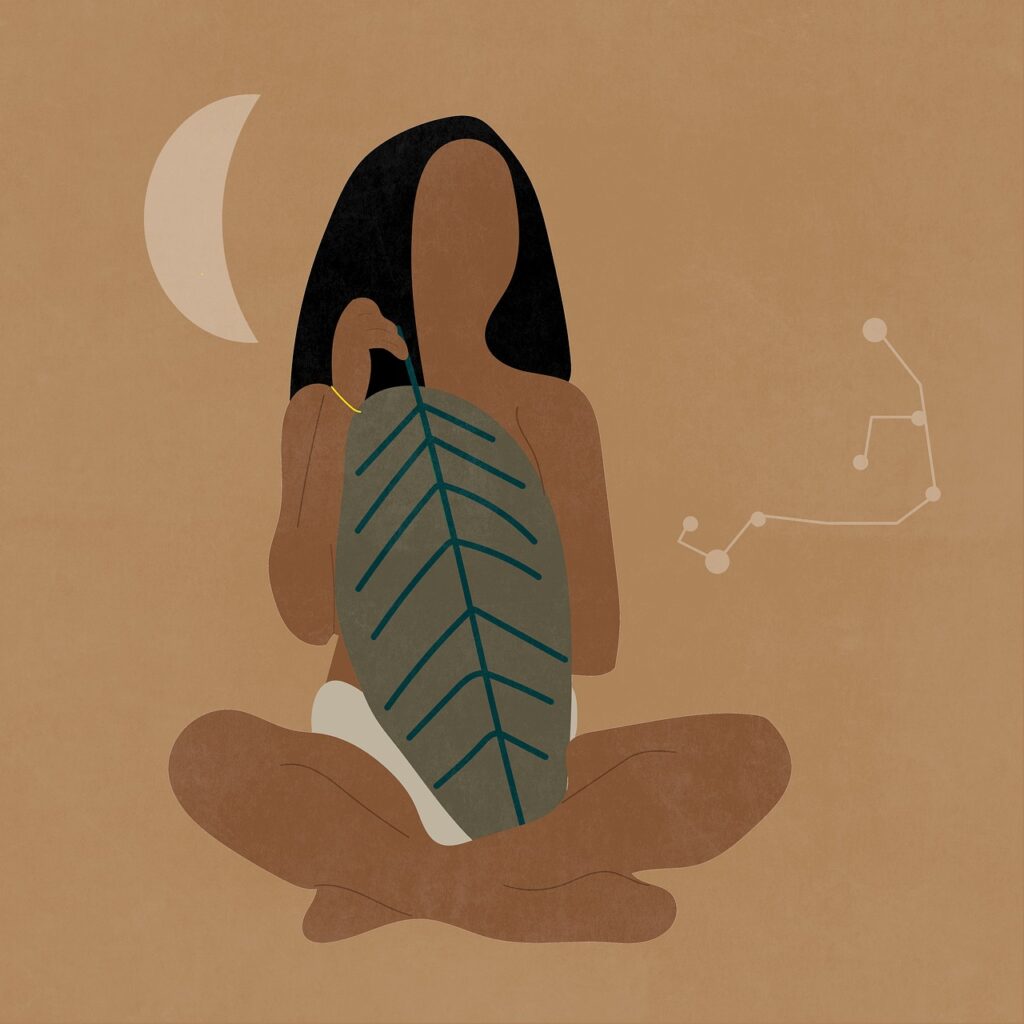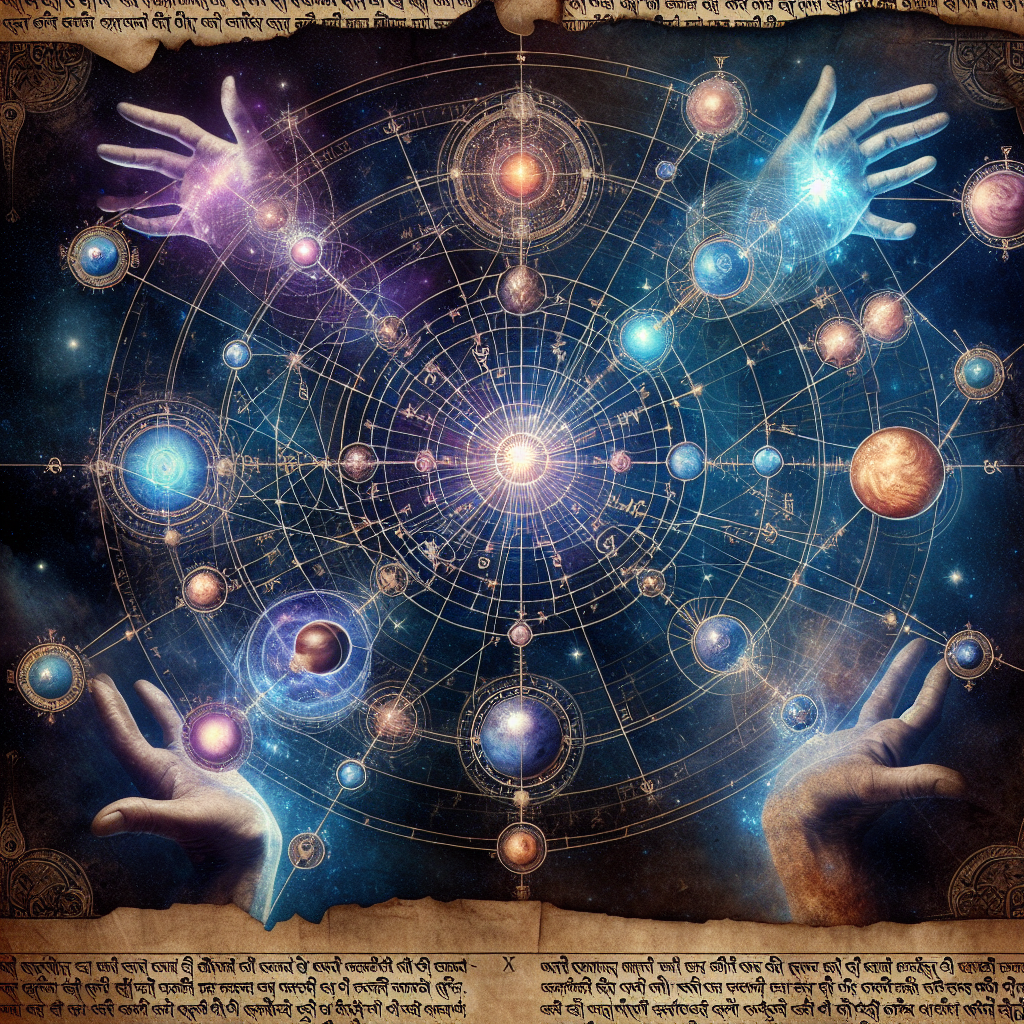
Imagine embarking on a captivating journey that takes you beyond the realm of our everyday world and into the depths of the cosmos. Explore the wonders of Vedic Astrology, a fascinating ancient practice that offers insights into your past, present, and future through the alignment of the stars and planets. Uncover the hidden mysteries of your birth chart and unravel the cosmic forces that shape your destiny. Join this complete journey among the stars and unlock the secrets that Vedic Astrology holds for you. The universe is waiting to reveal its enchanting wonders – are you ready to explore?

What is Vedic Astrology?
Vedic Astrology, also known as Jyotish, is an ancient system of divination and prediction that originated in India thousands of years ago. It is regarded as one of the most comprehensive and accurate astrological systems in the world. The term “Vedic” refers to the Vedas, the sacred texts of ancient India, from which this astrological wisdom is derived. Vedic Astrology provides profound insights into various aspects of human life, including personality traits, relationships, career, and even spirituality.
Ancient Wisdom of the Vedas
The Vedas, the foundational texts of Hinduism, contain a wealth of knowledge and wisdom in various disciplines, including astrology. Vedic Astrology is considered to be a part of the Vedangas, the six auxiliary disciplines associated with the Vedas. The ancient sages and seers of India possessed a deep understanding of the cosmic energies and their impact on human life, which they immortalized in the Vedas. This wisdom, passed down through generations, forms the basis of Vedic Astrology.
The Astrological System
Vedic Astrology is a holistic system that takes into account the positions and movements of celestial bodies, such as the sun, moon, planets, and stars, at the time of an individual’s birth. These planetary influences are believed to shape various aspects of a person’s life, including their character, relationships, and overall destiny. The system uses a geocentric perspective, meaning it considers the Earth as the center, and the movements of the heavenly bodies in relation to the Earth. Through complex calculations, Vedic Astrology creates birth charts, also known as horoscopes, which serve as maps of an individual’s life.
Key Differences from Western Astrology
While there are similarities between Vedic Astrology and Western astrology, there are also significant differences. One key difference is the zodiac system used. Vedic Astrology utilizes the Sidereal zodiac, which is based on the actual positions of the constellations in the sky, while Western astrology uses the Tropical zodiac, which is based on the annual motion of the sun. Another difference lies in the interpretation and emphasis placed on certain planetary energies. Vedic Astrology places a strong emphasis on the moon, as well as the lunar mansions known as Nakshatras. Additionally, Vedic Astrology employs different predictive techniques and methodologies, resulting in distinct insights and perspectives.
History of Vedic Astrology
Origins in the Vedas
The origins of Vedic Astrology can be traced back to the ancient Vedic texts, particularly the Atharva Veda and Rig Veda. These scriptures contain hymns and verses that describe celestial phenomena and the relationship between the heavenly bodies and human existence. The seers and scholars of ancient India delved deep into the mysteries of the cosmos and formulated the principles that would later become the basis of Vedic Astrology.
Integration with Hinduism
Over time, Vedic Astrology became an integral part of Hindu culture and religion. It was interwoven with various aspects of Hinduism, such as rituals, festivals, and sacred ceremonies. Astrologers were highly respected individuals who were often consulted for guidance and predictions on important life events. Vedic Astrology became a tool to understand the individual’s role in the grand tapestry of creation and to navigate life’s challenges while aligning with one’s dharma, or cosmic duty.
Development through the Ages
Vedic Astrology went through a process of refinement and development over the centuries. The great sages and scholars of ancient India, such as Parashara, Varahamihira, and Jaimini, made significant contributions to the field. They expanded the understanding of astrological principles, formulated predictive techniques, and documented their knowledge in classical texts. These texts, such as the Brihat Parashara Hora Shastra and the Jaimini Sutras, serve as invaluable resources for practicing astrologers and astrology enthusiasts today.
Philosophical Foundations
Karma and Destiny
Central to Vedic Astrology is the belief in the law of karma, which states that our actions have consequences that shape our destiny. Vedic Astrology recognizes that our past actions, from this lifetime and previous lifetimes, create an energetic blueprint that influences our present and future experiences. Birth charts, therefore, serve as a reflection of an individual’s karma and the potential outcomes that may unfold in their life. By understanding the karmic patterns and lessons presented in the birth chart, we can gain insights into the purpose and direction of our lives.
Reincarnation and the Soul
Vedic Astrology is rooted in the belief in reincarnation, the process of the soul’s journey through multiple lifetimes. It acknowledges that the soul continues to evolve and learn through various incarnations, carrying the imprints of past experiences into the present life. The birth chart acts as a snapshot of the soul’s journey and provides a window into the lessons, talents, and challenges that the individual has brought into this lifetime. Vedic Astrology considers the soul’s evolution as the ultimate goal and seeks to guide individuals on their spiritual path.
The Four Goals of Life
Vedic Astrology recognizes four primary goals or pursuits in human life, known as the Purusharthas. These goals are Dharma (duty or righteousness), Artha (prosperity or wealth), Kama (desire or pleasure), and Moksha (liberation or spiritual enlightenment). The birth chart can reveal the individual’s inclination towards these goals and provide insights into how they can engage in a balanced pursuit of these aspects of life. Vedic Astrology, therefore, goes beyond mere prediction and helps individuals align their actions and choices with their higher purpose.
Nakshatras: The Lunar Mansions
Overview of Nakshatras
In Vedic Astrology, the Nakshatras are the 27 divisions of the zodiac, each associated with a specific star or constellation. They form an essential part of the Indian lunar calendar, representing different qualities, energies, and characteristics. Each Nakshatra is further divided into four quarters, known as Padas. These Nakshatras are deeply significant in Vedic Astrology and play a vital role in describing an individual’s personality and life experiences.
Significance in Vedic Astrology
The Nakshatras offer a nuanced understanding of an individual’s psychological and emotional makeup. They provide insights into various aspects of life, such as relationships, career, and spiritual growth. Each Nakshatra possesses its unique symbolism, ruling deity, and planetary influence. By analyzing the Nakshatra placements in a birth chart, an astrologer can gain a deeper understanding of the individual’s innate qualities, strengths, weaknesses, and potential life events.
Interpreting Nakshatras in Birth Charts
In Vedic Astrology, the Nakshatras are considered in conjunction with the twelve signs of the zodiac, known as the Rashi. The combined influence of the Nakshatra and Rashi provides a more comprehensive understanding of an individual’s character and life experiences. The Nakshatra placement of the moon at the time of birth, known as the Janma Nakshatra, is particularly significant. It provides valuable insights into an individual’s emotional needs, behavioral patterns, and life purpose. Astrologers analyze the interplay between the Nakshatra and other planetary placements to create a holistic interpretation of the birth chart.

Grahas: The Planetary Influences
Role of Grahas in Vedic Astrology
In Vedic Astrology, the Grahas, or planets, are considered as potent forces that influence human life. They represent different aspects of consciousness and energy that manifest in various areas of life. The seven traditional Grahas used in Vedic Astrology are the Sun (Surya), Moon (Chandra), Mars (Mangala), Mercury (Budha), Jupiter (Guru), Venus (Shukra), and Saturn (Shani). In addition to these, the two shadowy planets, Rahu and Ketu, are also considered in Vedic Astrology.
Jyotish and the Nine Planets
Vedic Astrology considers nine celestial bodies as significant influences in a birth chart. These include the seven traditional Grahas, along with Rahu and Ketu, which are referred to as the lunar nodes. Each planet represents specific qualities, energies, and characteristics that impact a person’s life. The planets are believed to interact with each other, creating dynamic and intricate patterns that influence an individual’s circumstances and experiences.
Meanings and Characteristics of Grahas
Each Graha has its own unique meanings, characteristics, and influences. For example, the Sun represents individuality, self-expression, and vitality, while the Moon relates to emotions, intuition, and the subconscious mind. Mars is associated with energy, passion, and willpower, while Mercury represents communication, intelligence, and adaptability. Jupiter signifies wisdom, growth, and abundance, and Venus relates to love, beauty, and sensuality. Saturn represents discipline, responsibility, and life lessons. Rahu and Ketu are considered as karmic forces that influence an individual’s destiny. The interplay between these Grahas determines the overall astrological portrait of an individual.
Rashi: The Zodiac Signs
The Twelve Rashi in Vedic Astrology
In Vedic Astrology, the zodiac is divided into twelve equal parts, each corresponding to a specific sign or Rashi. These signs are Aries (Mesha), Taurus (Vrishabha), Gemini (Mithuna), Cancer (Karka), Leo (Simha), Virgo (Kanya), Libra (Tula), Scorpio (Vrishchika), Sagittarius (Dhanu), Capricorn (Makara), Aquarius (Kumbha), and Pisces (Meena). The Rashi system provides a framework for understanding an individual’s basic nature, strengths, weaknesses, and life experiences.
Planetary Rulerships
Each sign of the zodiac is associated with a ruling planet, which influences the qualities and characteristics of that sign. The rulerships in Vedic Astrology are as follows: Mars rules Aries and Scorpio, Venus rules Taurus and Libra, Mercury rules Gemini and Virgo, the Moon rules Cancer, the Sun rules Leo, Jupiter rules Sagittarius and Pisces, and Saturn rules Capricorn and Aquarius. Understanding the planetary rulerships allows astrologers to decipher the interplay between the planets and signs, providing a deeper understanding of an individual’s personality traits and life experiences.
Elements and Qualities of Rashi
In addition to planetary rulerships, each Rashi is associated with an element and a specific quality. The four elements in Vedic Astrology are Fire, Earth, Air, and Water, corresponding to the signs of Aries, Taurus, Gemini, Cancer, Leo, Virgo, Libra, Scorpio, Sagittarius, Capricorn, Aquarius, and Pisces, respectively. The three qualities, or Gunas, are Sattva (pure, balanced), Rajas (passionate, active), and Tamas (dull, inert). The qualities are assigned to various signs, providing further insights into an individual’s nature, behavior, and life experiences.

The Birth Chart: Mapping Your Destiny
Introduction to the Birth Chart
The birth chart, also known as the Janma Kundali, is a graphical representation of the positions of celestial bodies at the time of an individual’s birth. It provides a snapshot of the cosmic energies that were present and their potential impact on the person’s life. The birth chart is a powerful tool in Vedic Astrology, revealing important information about an individual’s personality, relationships, career, and life events. It is created based on the date, time, and location of birth.
Significance of Lagna
The Lagna, or ascendant, is a crucial component of the birth chart. It represents the exact degree of the zodiac that was rising on the eastern horizon at the moment of birth. The Lagna signifies the individual’s physical body, appearance, and overall approach to life. It is considered the starting point of the birth chart and sets the stage for the placement and influence of other planets in different houses. Understanding the Lagna helps astrologers gain insights into an individual’s unique expression and life experiences.
Interpretation of Planetary Placements
The placement of planets in different houses of the birth chart holds significant meaning in Vedic Astrology. Each house represents different areas of life, such as career, relationships, health, finances, and spirituality. The planets in these houses exert their influence, shaping the various aspects of an individual’s life. Astrologers analyze the planetary placements, aspects, and their relationship to each other to provide a comprehensive interpretation of the birth chart. This interpretation helps individuals gain a deeper understanding of themselves and their life’s purpose.
Doshas and Yogas: Positive and Negative Influences
Identifying Doshas and Yogas
Vedic Astrology recognizes the presence of both positive and negative influences in a birth chart. Doshas are astrological combinations or placements that indicate challenges, obstacles, or imbalances in an individual’s life. Yogas, on the other hand, are beneficial planetary combinations that indicate strengths, talents, and potential blessings. Identifying doshas and yogas in a birth chart allows astrologers to provide guidance on how to navigate challenges and enhance positive influences.
Effects on Life and Personality
Doshas and yogas have a significant impact on a person’s life experiences and personality traits. Doshas can manifest as health issues, relationship challenges, financial difficulties, or hurdles in career advancement. They may also indicate certain personality traits or behavioral patterns that need to be understood and managed. Yogas, on the other hand, indicate areas of strength, talent, potential success, and positive outcomes. By understanding the doshas and yogas in a birth chart, individuals can make conscious choices and take appropriate actions to mitigate challenges and maximize opportunities.
Remedies and Mitigations
Vedic Astrology offers various remedies and mitigations to balance the doshas and enhance the positive influences in a birth chart. These remedies may include the performance of specific rituals, wearing gemstones, practicing specific mantras or prayers, observing fasting or other spiritual practices, and making lifestyle or dietary adjustments. The intention behind these remedies is to align oneself with the cosmic energies and to transform challenging circumstances into opportunities for growth and evolution. The remedies serve as tools for empowerment and self-transformation.

Predictive Techniques: Seeing the Future
Dashas and Antardashas
Dashas are major planetary periods that represent specific time periods in an individual’s life journey. Each dasha is ruled by a particular planet and has a fixed duration, typically ranging from a few months to several years. Antardashas, or sub-periods, occur within the dashas and provide additional insights into specific phases or events within the broader timeline. Dashas and antardashas offer a predictive framework to understand the unfolding of events and trends in an individual’s life.
Transits and their Importance
Transits refer to the movement of planets through different positions in the zodiac that impact an individual’s birth chart. These planetary transits, such as the movement of Jupiter, Saturn, or other planets, play a significant role in triggering events, opportunities, or challenges in a person’s life. Astrologers analyze the transits in conjunction with an individual’s birth chart to forecast potential trends and developments. The study of transits helps individuals navigate changing circumstances and make informed decisions.
Traditional Forecasting Methods
In addition to dashas, antardashas, and transits, Vedic Astrology employs various traditional forecasting methods to provide insights into the future. These methods include the use of various charts, such as transit charts, solar return charts, and varshaphal charts, which focus on specific areas of life or time frames. Astrologers also take into account planetary aspects, planetary relationships, and the overall energy dynamics at play to offer accurate predictions and guidance. These methods allow individuals to make informed choices and prepare for upcoming opportunities or challenges.
Applications of Vedic Astrology
Personal Guidance and Insights
Vedic Astrology offers valuable guidance and insights into an individual’s life. By analyzing the birth chart, astrologers can provide a deeper understanding of one’s strengths, weaknesses, potential challenges, and life purpose. This understanding allows individuals to make conscious choices, navigate life’s complexities, and maximize their potential for personal growth and fulfillment.
Compatibility and Relationship Analysis
Vedic Astrology is often employed to assess compatibility and analyze relationships. By comparing the birth charts of two individuals, astrologers can gain insights into the dynamics and potential challenges of a relationship. They consider factors such as planetary positions, aspects, and compatibility of the moon, Venus, and Mars. This analysis helps individuals understand their compatibility with partners, family members, or business associates, enabling them to foster harmonious and fulfilling relationships.
Career Guidance and Financial Outlook
Vedic Astrology provides valuable guidance and insights into career choices, vocational aptitudes, and financial outlook. By analyzing the planetary placements and their relationship to the second and tenth houses in the birth chart, astrologers can identify potential career paths, areas of success, and financial opportunities. This understanding helps individuals make informed decisions regarding their professional life, investments, and financial planning.
In conclusion, Vedic Astrology offers a comprehensive and profound understanding of human life and its relationship with the cosmic forces. Through the ancient wisdom of the Vedas and the intricate calculations of planetary influences, Vedic Astrology provides guidance, insights, and a deeper connection to our true purpose. By delving into the Nakshatras, Grahas, Rashis, and other elements of the birth chart, we embark on a profound journey to explore the wonders of Vedic Astrology, unraveling the mysteries of the stars and unlocking the secrets of our own destiny.

